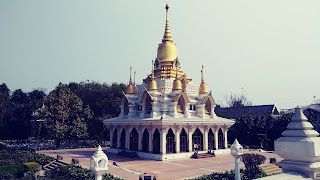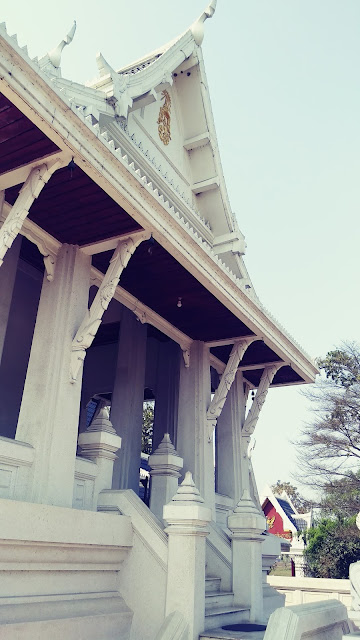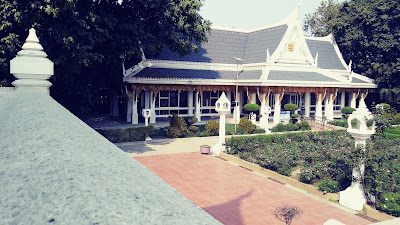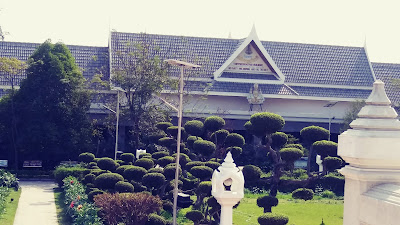Maha Chetiya
The Buddha’s relics were discovered near Piprahwa, a village in the Basti District on the border of Nepal in 1898 by Mr. William Claxion Peppe. The government of India had offered this relic to his majesty King Ramv V. King of Thailand who was the only existing Buddhist monarch. The Maha Chetiya is a center of worship for Buddhist all over the globe. It stands as an important landmark on the precinct of Kushinagar. It is one of the finest gifts from Thailand to India. The land of the Buddha-thereby strengthening the bilateral.
Uposatha
Uposatha is a concerted assembly hall. In the tradition of Theravada Buddhism, it is used by sangha to perform ceremonies concerning the code of Monastic disciplines (Vinaya) for instance bi-weekly recitation of the fundamental disciplines and ordination ceremony. It is established by sanctioned boundaries, usually marked with stones, known as "sima". Layman is not allowed inside these boundaries at certain ceremonies such as the above-mentioned ones. As a place of worship, it houses the most important Buddha statue of the temple. His Majesty King Bhumibol. King of Thailand has graciously given the royal monogram "Bhor Per Rer" to be affixed to the front gable. It is one of the finest Contemporary Thai Style Uposathas and is designed by Assistant Professor Dr. Phinyo Snwankhiria national artist. Its construction started in March 1996 and it is partially completed.
The Uposatha hall in Wat Thai Kusinara Chalermrj is open to the public from 10:00 AM to 05:00 PM. It is occasionally closed for monks ceremonies and ritual. The main attractions are on the first floor of the ceremonial hall. Here all the members of the monastery assemble chanting and meditation every morning at 06:00 AM and every evening at 07:00 PM. The chanting is in Pali, an ancient language of India. Visitors may join chanting at the mentioned time. The painted wall of the ceremonial hall depicts the story of the king Mahajanka in Mahajanka Jataka, who practiced ultimate perseverance without the desire of reward, which resulted in his going a throne and bringing the prosperity to the city of "Mithila". His Majesty King of Thailand modified this story to suit contemporary society. The story was magnificently portrayed by Thai artists from the Department of Fine Art. Ministry of Education, Thailand. There are also the painting of the Celestial's Society (Devasamagama) and social activities of his Majesty King of Thailand.
President Buddha Image
Photograph of his Majesty King of Thailand as a Monk
The photograph of the King Bhumibol when he was in monkhood is exhibited inside the Uposatha Hall. His Majesty has graciously given this picture to the monastery.













































